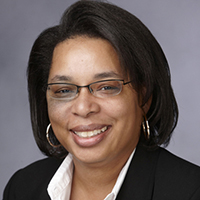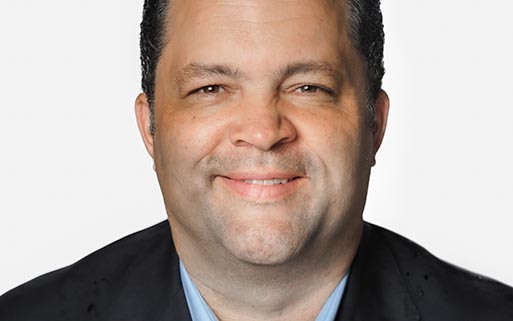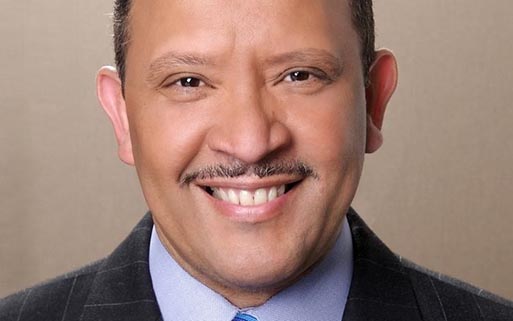
By Khalil Abdullah
Special to the Trice Edney News Wire from Ethnic Media Services
(Trice Edney Wire) – Dr. Melva Thompson-Robinson knows the data on the disparate impact of the coronavirus and COVID-19 on African Americans and other minorities. Her key concern is how racism and unconscious bias continue to act as an accelerant of the pandemic.
“Stories are starting to come out where African Americans are presenting themselves to emergency rooms and having COVID symptoms and are not being seen,” Thompson-Robinson asserts. “In some cases, it’s taking multiple trips, but by the time they do get tested they are so sick they can’t recover.”
Thompson-Robinson could have had Ms. Deborah Gatewood in mind. Gatewood repeatedly sought to be tested in mid-March for COVID-19 symptoms at the hospital in Michigan where she had been employed as a healthcare worker for over 30 years, according to Fox News 2 in Detroit. She was turned away—four times—and advised to go home and take a mild palliative, like cough syrup. Gatewood finally became so ill she had to be transported by ambulance. She died in late March at age 63 in a different hospital. She tested positive there for COVID-19, but too late for a lifesaving intervention.
The Gatewood story is a horrific but not atypical reminder of the fatal outcomes that Dr. Thompson-Robinson attributes to a long history of sub-optimal health care experienced by African Americans and the inherent bias that bleeds into all aspects of American life, from education to housing to employment opportunities. “This is something that has been centuries in the making – in the inequality, in the racism that African Americans in particular have experienced, but also other black and brown populations as well,” Thompson-Robinson contends.
Thompson-Robinson is the Director of the Center for Health Disparities Research at the University of Nevada, Las Vegas. She spoke on a May 1 video conference for ethnic media journalists hosted by Ethnic Media Services. By way of example, in Louisiana, African Americans comprise about 30 percent of the population and over 70 percent of the COVID-19 patients, Thompson-Robinson noted, while in Georgia, they constitute 32 percent of the population but 52 percent of the cases. She said in many communities, low wage occupations – now categorized as essential – are filled by minority workers who often have no health insurance even as data on their underlying health conditions goes uncollected.
“We don’t get cancer at a higher rate, but we die at a higher rate. We don’t go to the physician. We aren’t getting things checked out until it’s too late.” Even when presenting to a physician or medical staff in a timely manner, as Ms. Gatewood attempted to do in Michigan, unconscious bias or stereotypes can weigh in on what may ultimately be an ill-formed medical diagnosis or supposition.
Thompson-Robinson spoke of her own experience of having to forcefully advocate for a family member. She recommends that a prospective patient bring someone along to the emergency room to serve as an advocate when he or she isn’t feeling well. Individuals from minority groups aren’t taken seriously when they say they’re in pain or when they are unable to articulate their symptoms to the satisfaction of medical personnel.
As for bias, it can manifest in simple ways. “’Oh, I’m not racist,” Thompson-Robinson says mimicking a casual interaction, “but yet their actions treat people a little bit differently based on the biases they have. In the field of medicine, delays in being seen or treated typically yield poorer health outcomes.” David Hayes-Bautista, Director of the Center for the Study of Latino Health and Culture at UCLA, concurred that minorities staff the front lines of essential service professions. “Feeding the nation and subject to deportation,” is how he described many of the undocumented or legally tenuous workers putting their lives at risk as farmworkers, meat packers, truck drivers, shelf stockers, check-out clerks, auto mechanics, bus drivers, nursing home attendants and other occupations heavily staffed by Latinos and people of color. They are also twice as likely not to have health insurance, Hayes-Bautista said.
In the public discourse about the effects of COVID-19, Mayra Alvarez, president of the Children’s Partnership, expressed dismay at the scant attention paid to children. Federal relief efforts have excluded immigrants and, by default, their children.
At least 55 million students have been cast adrift by school closings in 43 states and the District of Columbia. Food insecurity is a paramount concern, as is the dearth of access to distance learning. Nor is there much discussion about the long-term consequences of the trauma to which children are being exposed. Children are residing in food-insecure homes where their parents sacrifice their own meals to feed them, Alvarez said, citing a survey of 500 families in California by Children’s Partnership and Ed Trust. Some 72 percent of respondents said they “are worried about their family’s mental health.”
Offering one reason for hope, Alvarez said, “I truly believe that COVID-19 is shifting the conversation when it comes to greater understanding of historical inequities in health, in economic opportunity, in overall well-being – historical inequities that many of us have known have existed forever.” It is a sentiment shared by Thompson-Robinson. “I hope that once we come out of this pandemic, these conversations will continue – and that people will realize the health of our communities, our workforce, our country is only as strong as its weakest link.”















